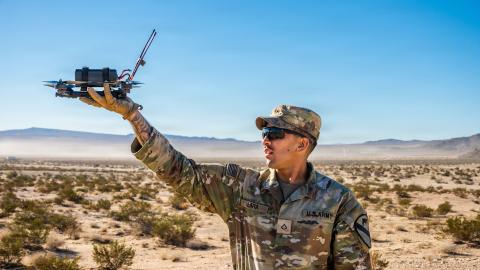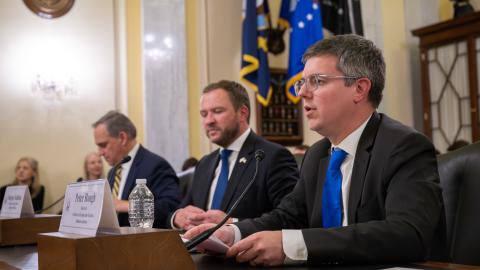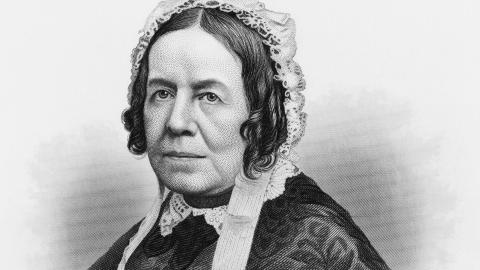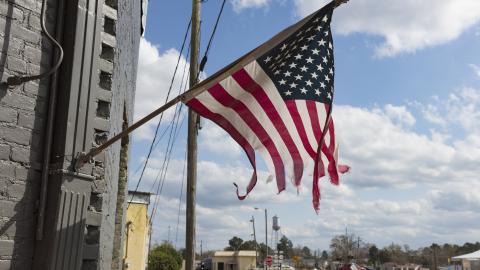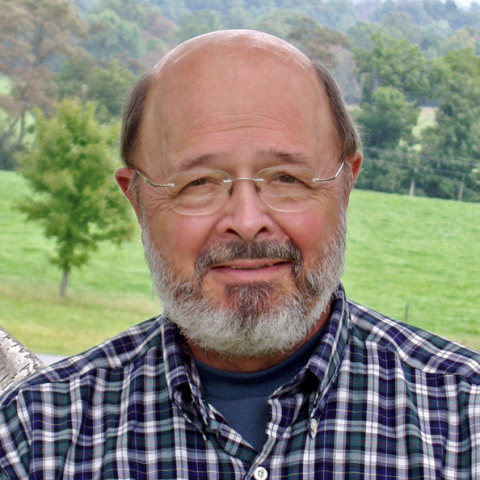The New York Times marvels editorially that none of the Republicans running for the Senate accept the "scientific consensus that humans are largely responsible for global warming." Maybe that's because the Republicans come from more rural (Red) states that haven't had any warming—man-made or otherwise.
My colleague Ed Long, formerly a NASA physicist, has found a severe problem with the "official" U.S. temperature records from the Goddard Space Institute and the National Data Collection Center. Both data sets deal with the inevitable gaps in station-by-station data by averaging the gap station with another nearby station. Supposedly, this works because "stations in the same latitude bands tend to share a more similar climate."
Too often, however, this has led to averaging rural and urban temperatures together. Inevitably, that means the blended temperatures will be higher. Due to the Urban Heat Island effect, a big city can raise its own temperatures by five degrees C. Even a small city can be 2 degrees C warmer than the surrounding countryside. The rural population of America has stayed roughly the same since 1950, but the urban population doubled from 1950–1960—and has continued to grow twice as fast.
Long says GISS "adjustments" over ten years have progressively lowered temperatures for far-back data and raised the temperatures in the recent past. This "adjustment" increased a 0.35 degree C per century uptrend in 2000 to 0.44 degrees C per century in 2009—a 26 percent increase. NCDC, meanwhile, has shifted the "official" rate of temperature change for 1940–2007 from 0.1 degree per century in the raw data to an "adjusted" 0.6 degrees C per century—a 600 percent "adjustment."
To assess the real size and meaning of the rural-urban divergence, Long selected one rural station and one urban station per state; the rural and urban station trends were then averaged separately. The results are startling.
The rural data set shows no warming since 1890! The temperatures have trended up and down, but there's no overall increase. The urban stations show a strong warming, especially after 1965. Are these two "skeleton sets" of raw data more representative of reality than the urban-polluted "adjusted" data sets in the official records? Long says "Yes"
* The raw data is that measured at the time, so, simply stated, those were the temperatures.
* The two sets had strikingly similar variations, with the rural set having more variability. The cities were warmer, but less susceptible to short-term changes in air temperatures due to their retained heat.
* The medium-term trends are similar up to about 1965, but the cities warmed much faster after that year. That's probably not global warming, but rather the in-filling of the cities: higher populations, more and taller office buildings, more streets and parking lots, more lost trees. The airports have poured more concrete, and become "development hot spots."
Both data sets show that public opinion has been heavily impacted by the continuing 30-year phases of the Pacific Decadal Oscillation. Temperatures rose strongly 1915–1940 during a Pacific warming, but World War II was scarier than any theory about man-made warming. When the PDO trended downward from 1940–1975, news magazines and "experts" predicted a new Ice Age. When the temperatures and the Pacific rose strongly again from 1976–98, the man-made warming scare was born and flourished. Now that earth has failed to warm for a decade, public fear of global warming has waned dramatically.
We have clearly been polluting the official temperature record with Urban Heat. Has none of the global warming scientists, cap and trade millionaires, and media folks noticed? Or have the billions and billions of dollars spent to "save the world from pending disaster" clouded their vision?
Source: Edward R. Long, "Contiguous U.S. Temperature Trends Using NCDC Raw And Adjusted Data for One-Per-State Rural and Urban Station Sets. SPPI, February 27, 2010.
